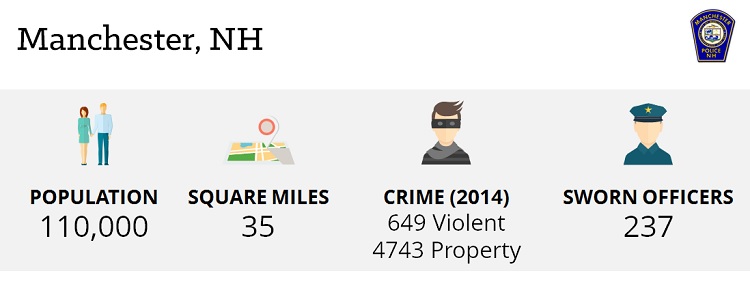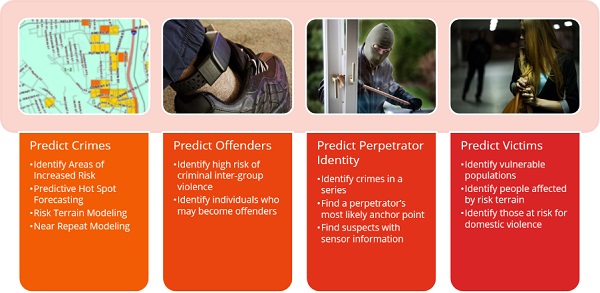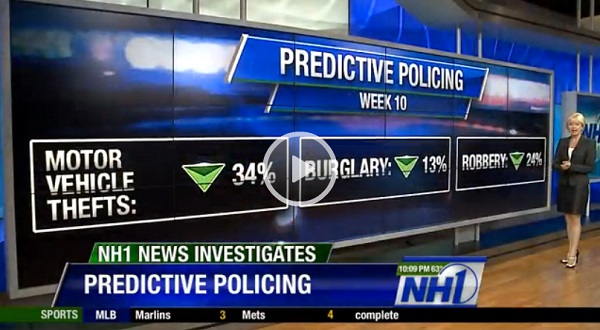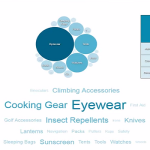Ironside Case Study: Manchester PD’s Predictive Policing Success
Law enforcement is a place where data science and predictive analytics have the chance to truly change lives. These strategies and technologies can make a huge difference in crime prevention and public safety efforts, improving people’s wellbeing in communities of all sizes. The Manchester, NH Police Department wanted to make this kind of impact in their city, and chose to implement Ironside’s Predictive Policing platform to achieve their crime reduction goals.
Quick Facts
Client Goals
- Understand where and when incidents occur, as well as the prevalence of different incident types.
- Improve crime prevention through better understanding the drivers of incident and improving forecasting of future incidents.
- Receive hands-on mentorship to make crime analysts self-sufficient with modeling technology.
Initially, what the Manchester Police Department did is started using the information that we had to try to figure out where to put our personnel to prevent crimes. Over a three month period, we did this and we saw amazing results when it came to armed robberies of corner stores. It was actually the springboard into ‘there’s got to be more that we can even do with this,’ because if we can do it on an elementary level, imagine what we could do on a level where we actually have algorithms and we actually have a system to feed all of our information to to get out the best places to put our people.
– Nick Willard, Chief of Police, City of Manchester
Engagement Details
The Ironside Data Science & Analytics team helped Manchester PD get an SPSS Modeler implementation up and running that would complement their fledgling hot spot policing system, developed predictive models in that environment, and mentored the department’s crime analysts throughout the process so that they would be fully enabled on the product and with the assets created. Ironside Data Scientist Chi Shu worked hand-in-hand with Officer Barter and Manchester PD’s other internal resources to design a model matching the project’s goals while also providing instruction focused around the formal methodologies for data science, such as CRISP-DM, and the data preparation, modeling, evaluation, and deployment activities needed to meet those standards. This left Manchester PD with a staff equipped not only to run the predictive hot spots module, but also to test hypotheses and design further crime reduction strategies.
The areas of focus for Manchester PD’s implementation weren’t just plucked out of the air. Instead, they were grounded in well-established theories on criminal behavior that have long been cornerstones of the law enforcement community.
“The great thing about using SPSS Modeler and predictive analytics in this way,” says Officer Matthew Barter from Manchester PD’s Crime Analysis and SWAT units, “is we can incorporate criminology and crime theory into how we deploy the model.”
In the case of the hot spots module, the crime theory to which Officer Barter refers is Routine Activities Theory, which states that there are three reasons why crime clusters in certain areas:
- Motivated offenders exist in the area, meaning there are people willing to commit crime present.
- There are suitable crime targets in the area, meaning easy victims or buildings/vehicles that are easy to break into.
- There is a lack of capable guardians in the area, meaning there is no visible police presence or similar deterrent to discourage criminal activity.
It may sound simple, but according to the theory, injecting a police presence into an at-risk area does a lot to take away the influence of crime. The hot spots module provides the intelligence necessary to put officers in those key positions during the times when they can have the most impact, often not just stopping crimes in progress but preventing/discouraging them from happening entirely.
Results and Value Delivered
Manchester PD’s success with the Ironside Predictive Policing platform has been nothing short of extraordinary. Their models are yielding geographically relevant forecasts that give them the jump on crime and allow them to target precise areas of their jurisdiction. In addition to the predictive hot spots module already in use, Officer Barter and the other crime analysts on the force are already diving into new possibilities with SPSS Modeler, generating hypotheses and driving toward further crime prevention models.
Here’s the rundown on what’s been accomplished so far:
- Provided forecasts for each 8-hour officer shift, allowing appropriate resource allocation, and allowed daily updates to the hot spot maps so that forecasts are continually accurate to 7 days out.
- Set up workflows for pushing hot spot maps out to the mobile data terminals (MDTs) in Manchester PD cruisers so officers can see where hot spots are predicted on the go in near real-time.
- Recorded crime reductions of 24% for robberies, 13% for burglaries, and 34% for thefts from motor vehicles within the first 10 weeks of deployment.
- Recorded a total crime reduction impact of 28% within the first 5 weeks of deployment.
- Recorded 60% crime prediction accuracy within a 500-foot radius of where the crime was forecast to occur.
The technology is extremely easy. We’ve all had laptops in our cruisers for years now. It’s not new technology; it’s just another window that we’re opening up. It’s a map of the city that we’re all familiar with. I’ve had people from neighborhoods where their cars have all been broken into, they’ve just been riddled with car breaks, come out and thank me at 2 o’clock in the morning because they see the cruiser driving around and they’re saying it’s an absolute deterrent. They’re saying that their cars haven’t been broken into in weeks, so you’ve got that immediate effect that it’s there. And also, you’re going out there, you’re calling off on the hot spot, and you’re making great stops. You’re making good arrests and so there’s the immediate results right there that you’re seeing firsthand as well as you hearing the stories of your partners and the guy on the route next to you making those same arrests.
– Tyler Gagne, Officer, Manchester PD
Want to learn more about the Ironside Predictive Policing platform and our other data science projects? Check out the news report that NH1 News released about Manchester PD’s efforts, read interviews with our data scientists, and download the Ironside Predictive Policing platform brief. We’d be honored to help you protect your community.








